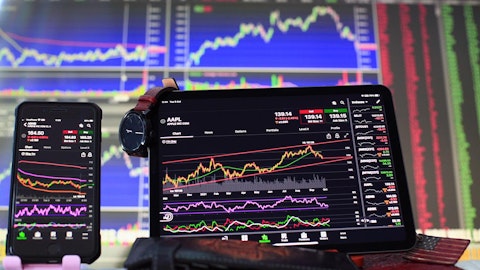Jimmy Bhullar: Okay. And then on the change in classification of COVID as a seasonal flu beginning, I think, you said mid-May, how should we think about the impact of that on your claims and potentially sales?
Fred Crawford: I think from a claims perspective, you’re seeing the recovery already, and that is we’re expecting it to recover back to previous traditional levels of claims activity. I think I mentioned to you last quarter, a normal week in Japan for us is processing something in the neighborhood of 30,000 claims in our operating center. That rose to north of 90, 000 claims a week during the deemed hospitalization period and seventh wave of COVID. So we’ve seen that dramatically come back down to normal levels with the exception of working the backlog that I mentioned in my comments. So I think the idea is to return back down to normal levels of benefit ratios, and that’s the answer there. In terms of new sales, we have Yoshizumi-san here and Koide-san and they can add their commentary.
I think the trickier thing is, when you’re talking about thousands of agents, some of whom were forced into quarantine conditions during COVID, the issue becomes not only are more agents out there able to produce and share numbers undisrupted by COVID, but will there be a recovery in face-to-face activity, which is more effective. This is still an extremely cautious society here. As we sit here today, we are all wearing masks on the way into work, on the way home from work, while at work and while walking the streets of Tokyo. So there’s still some time to take place to recover the full normal activity. Yoshizumi-san, I don’t know if you feel differently or have anything to add about COVID conditions.
Koichiro Yoshizumi: First of all, this COVID environment last year in the first quarter between January and March, sales have been severely impacted. And following that, the next peak, or the largest peak was between July and August, and many of the sales offices and branches were forced to shut down. However, the environment gradually changed, of course, at the timing of cancer launch, the things have been changing. And at the same time, agencies and sales agent activities became much more active. And as you’ve seen in our sales results, you can see that our new cancer insurance sales, is increasing and there’s been a great momentum in sales as a result. And the result is that compared with 2021, we have about 30% increase in cancer sales.
And also, our product strategy really was successful. For example, we were able to propose to customers more comprehensively of our products using WAYS. And as a result, third sector product sales increased because sales were done in a more cross-sell way. And as a result, we were able to exceed our second half 2021 sales in 2022. And as we enter this year, the COVID situation has been improving. And as a result, the agency’s activities are even more active. And we are seeing that we now are gaining really good momentum with our strategies related to products plus the channel strategy in this new environment and in this environment with living with COVID. So what I am thinking now is that we are starting to really see an environment where we would like to be aiming for Â¥80 billion in 2025 or 2026 time frame.
That’s all from me.
Operator: The next question comes from John Barnidge of Piper Sandler. Please go ahead.
John Barnidge: My question is around the paperless initiatives that have been moved to digital and claims. You mentioned, I think it was 10% of claims digitally now moving higher, I think. Can you maybe talk about how this may impact benefits ratios over time for maybe a one-day pay style approach to digital?




